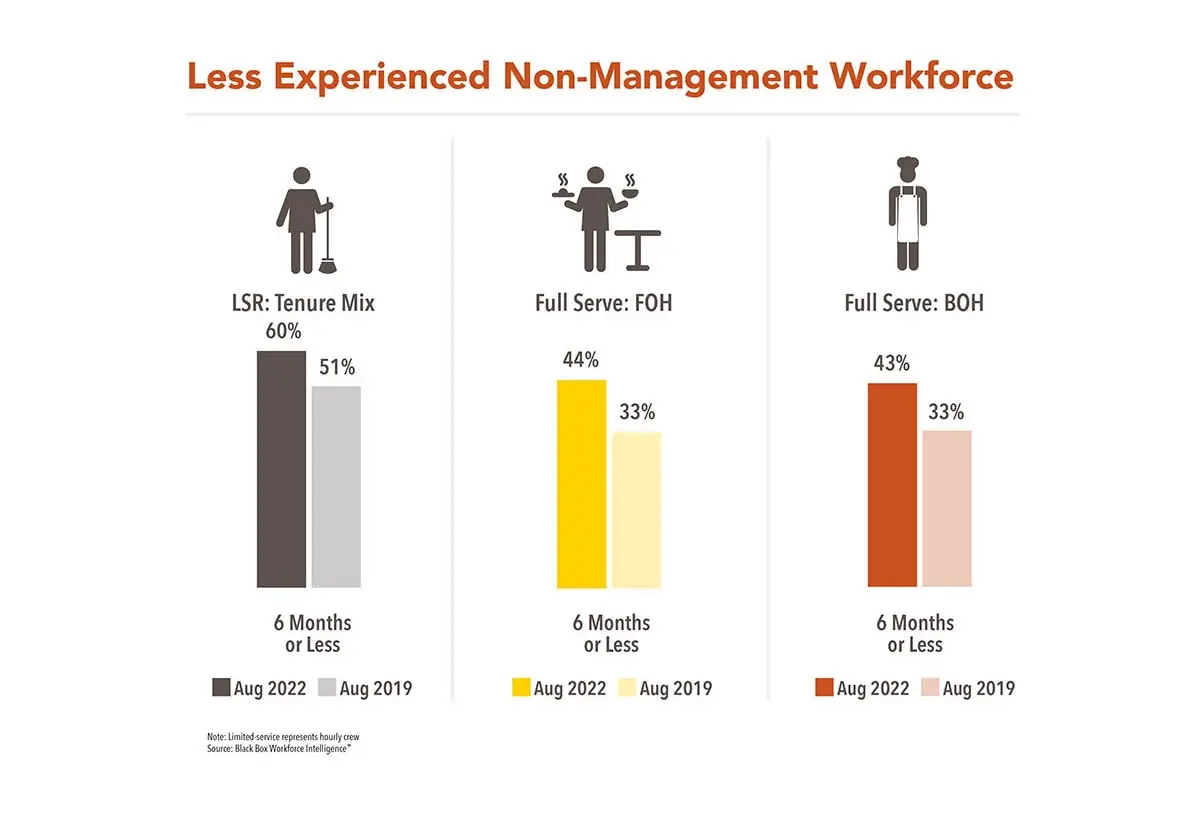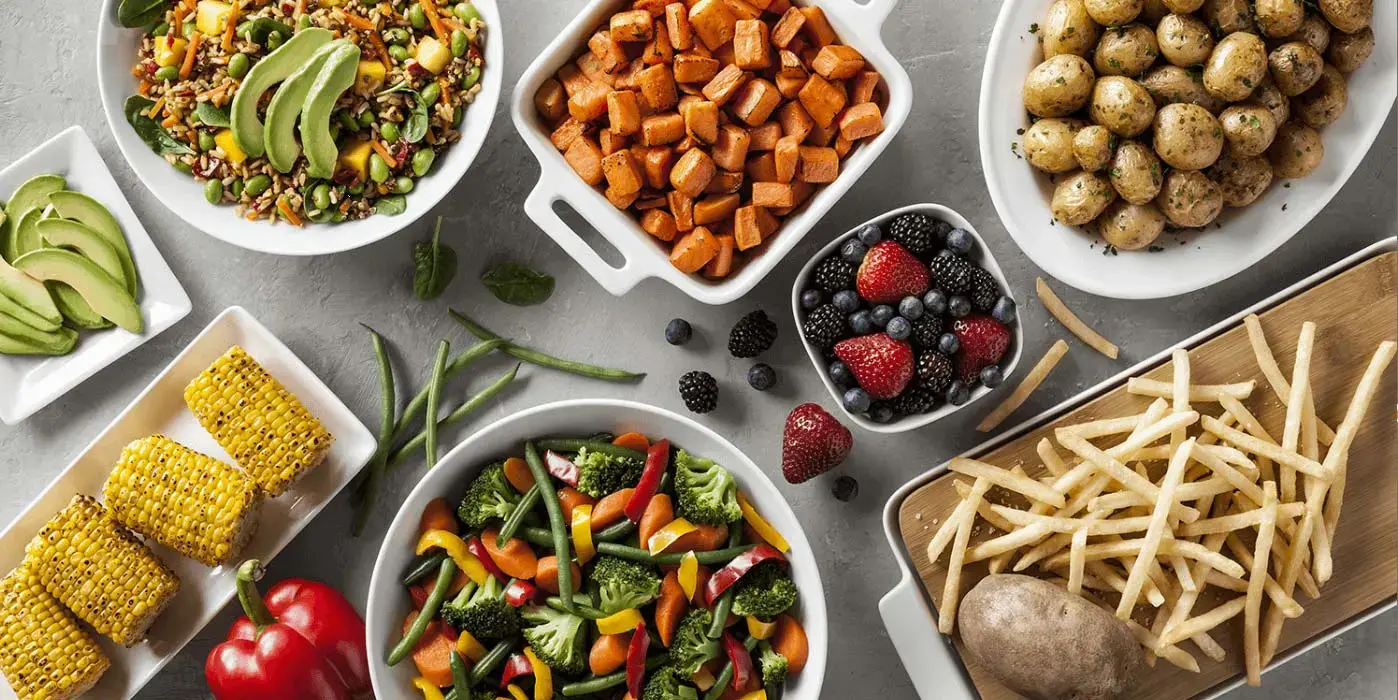Papas a la francesa
Cómo cocinar papas a la francesa congeladas: asesoramiento experto
2/14/2023

Todos en tu cocina saben cómo cocinar papas a la francesa congeladas, ¿verdad?
Con la extraordinaria rotación del personal de cocina impulsada por la pandemia, ya no es un hecho que todos tengan las competencias para cocinar papas a la francesa. Como resultado, el trabajador de cocina promedio hoy posee menos experiencia de la que solía tener. Y lo que no saben puede lastimarte.

¿Por qué? Recuerda que las papas a la francesa son tu artículo más rentable y su calidad es en verdad importante para los clientes. Que estén blandas, cocinadas en exceso, tengan un sabor raro, es decir cualquier cosa que no sea la perfección, puede arruinarlas para siempre y afectar directamente tus ganancias. De verdad vale la pena saber cómo preparar bien las papas a la francesa congeladas.
En este artículo, ofreceremos las mejores prácticas para hacer buenas papas a la francesa y disipar algunos mitos a lo largo del camino. Aprenderás a seleccionar las papas a la francesa correctas, el almacenamiento y la manipulación adecuados, la cocción y la conservación.
Vale la pena repetirlo: sigue las instrucciones de la caja
Este es un pequeño cuestionario para comenzar:
Verdadero o falso: Puedes darte cuenta cuando las papas a la francesa congeladas se cocinan correctamente solo con ver su color en la freidora.
Verdadero o falso: Las papas a la francesa terminaron de cocinarse cuando comienzan a flotar.
Verdadero o falso: Es inteligente colocar dos canastas de papas a la francesa a la vez en la freidora cuando estés atareado.
A diferencia de lo que se cree comúnmente en las cocinas, todas estas nociones son falsas. Para obtener lo mejor de tus papas a la francesa, sigue las instrucciones impresas en cada caja.
Es tu bebé: cómo manipular y almacenar papas a la francesa congeladas
Las papas a la francesa congeladas son increíblemente frágiles. Una caída de solo tres pies puede romper hasta el 35 % de las papas a la francesa dentro de una caja. Así que manipúlalas con suavidad, como si fueran un bebé.
No te pares sobre la caja y no apiles objetos pesados encima de ella en el congelador.
Apila las cajas en un congelador lejos de cualquier goteo y dejando espacio a los lados para que el aire frío pueda circular a su alrededor.
No dejes las papas a la francesa en el área de descarga durante más de 10 minutos para evitar que se descongelen. Descongelarlas antes de cocinarlas arruinará su textura. En su lugar, guarda las bolsas de papas a la francesa congeladas en el congelador hasta que estés listo para usarlas.
Si prefieres descongelarlas, usa solo papas a la francesa diseñadas específicamente para ese fin, como las de Simplot Infinity® Fries.
Cómo cocinar papas a la francesa congeladas para obtener mejores resultados
Cada papa a la francesa es diferente. Si sirves más de un tipo de papas a la francesa, asegúrate de que el personal conozca el tiempo de cocción adecuado para cada una y aliéntalo a configurar un temporizador de cocción para cada canasta.
Usa una espumadera durante el día para quitar los trozos de restos cocidos de la olla que aceleran la descomposición del aceite.
Precalienta la freidora a 345 °F. Puede ser tentador subir la temperatura para reducir los tiempos de cocción. Pero el aceite para freidora se descompone más rápido a temperaturas más altas. Por ejemplo, a 369 °F, el aceite se descompone de 2 a 3 veces más rápido que a 345 °F. ¡Y el aceite para freidora es costoso!
Verifica el tiempo de cocción recomendado impreso en la caja.
Llena tu canasta hasta la mitad o menos. Nunca llenes la canasta sobre la freidora. Hacerlo puede introducir cristales de hielo y trozos de papa que degradan el aceite de la freidora.
Agita la canasta durante unos segundos unos 30 segundos después de colocarla en la freidora. Esto evita que se amontonen.
Espera al menos 45 segundos después de colocar la primera canasta antes de poner una segunda canasta en la misma freidora. Si lo haces demasiado pronto, todas esas papas a la francesa frías retrasarán el retorno del aceite de la freidora a la temperatura de cocción y el resultado serán papas a la francesa poco cocidas.
Cuando suene el temporizador, levanta la canasta de la freidora e inclínala hacia adelante durante 10 segundos para drenar el exceso de aceite.
Nunca agregues sal a las papas a la francesa sobre la freidora. La sal reducirá la vida útil del aceite freidora.
Cómo manipular y conservar las papas a la francesa congeladas después de cocinarlas
Ahora que has cocinado las papas a la francesa perfectas, asegúrate de que lleguen a los clientes con el mejor sabor y textura posibles.
Nunca sostengas las papas a la francesa en la canasta sobre la freidora. El calor que sube desde abajo arruinará su textura.
En cambio, transfiere las papas a la francesa cocidas con suavidad a una estación de conservación o lámpara de calor para mantenerlas calientes.
Usa un sistema de rotación en el que las papas a la francesa más viejas se sirvan antes que las recién hechas. Esto reduce la cantidad que debe desecharse y garantiza que todos los clientes obtengan papas a la francesa de calidad.
Aplica un método consistente para sazonar las papas a la francesa. Las papas a la francesa con mucha sal son una verdadera decepción.
Cómo elegir las papas a la francesa congeladas adecuadas para tu restaurante
Elegir entre los cientos de tipos de papas a la francesa disponibles puede ser abrumador. En su lugar, recomendamos comenzar con el Buscador de papas a la francesa en simplotfoods.com. Solo responde algunas preguntas rápidas y deja que el Buscador de papas a la francesa limite las opciones por ti.
Largo de las papas a la francesa: se necesitan menos papas a la francesa largas para cubrir un plato o llenar un recipiente, por lo que las papas a la francesa de primera calidad rinden más porciones por caja. Y más porciones por caja aumentan la rentabilidad. Sí, cuestan un poco más. Pero una papa a la francesa de primera calidad de largo premium, como las Simplot Select Recipe® Fries, es más que compensa la diferencia. Además, a nadie le gustan las papas a la francesa gruesas.
Forma de las papas a la francesa: las papas a la francesa de corte recto, el corte más vendido, son una buena opción cuando deseas que se sientan tradicionales y familiares (como las Simplot Classic® Fries). Por otro lado, si deseas destacarte, elige una forma llamativa a la vista como las Simplot papas a la francesa SIDEWINDERS™. Los formatos de papas a la francesa de más rápido crecimiento en 2022 incluyeron formas novedosas en papas a la francesa y papas moldeadas:2
Corte ondulado: +1.5 %
Papas cortadas en cubos/en trozos: +12.2 %
Moldeadas redondas: +2.0 %
Moldeadas cuadradas/rectangulares: +19.8 %
Moldeadas como hamburguesas ovaladas: +10.4 %
Papas a la francesa corte lattice: +4.8 %
Coberturas y empanizados de papas a la francesa: las coberturas y los empanizados agregan tiempo de conservación y opciones de sabor. Por ejemplo, las papas a la francesa de Simplot Conquest® Delivery+® ofrecen tiempos de conservación líderes en la industria de hasta 40 minutos. En cuanto al sabor, la línea de papas a la francesa sazonadas/empanizadas SeasonedCRISP® de Simplot ofrece una variedad de perfiles de sabor que combinan con casi cualquier tema o cocina. Las papas a la francesa con cobertura también son mejores para los aperitivos cargados porque permanecen crujientes debajo de los ingredientes húmedos.
Velocidad de cocción de las papas a la francesa: para las operaciones y escuelas de gran volumen, una papa a la francesa de cocción rápida es fundamental. Por lo general, cuanto más delgado sea el corte, más rápido será el tiempo de cocción. Si la velocidad es primordial para ti, prueba las papas a la francesa de corte delgado de Simplot Infinity®, que se cocinan en tan solo 90 segundos. Por otro lado, es posible que tengas buenas razones para elegir una papa a la francesa de corte tipo filete de ½” de espesor (como su rico sabor a papa y retención de calor). Cada operador es diferente.
Papas a la francesa de primera calidad vs. papas a la francesa económicas: como regla general, vale la pena servir papas a la francesa de primera calidad. Obtienes mayor rendimiento, menos defectos y una calidad más consistente. ¿Necesitas pruebas? Observa los restaurantes más exitosos del mundo: cada uno de ellos usa una papa a la francesa de primera calidad. Cualquier otra opción no es económica.
Obtén recursos adicionales de capacitación sobre papas a la francesa de Simplot
Cuando compras papas a la francesa de Simplot, compras las mejores del mundo. Asegúrate de obtener el valor completo capacitando al personal para que las almacene, manipule y cocine de forma correcta. Solo envía por correo electrónico los enlaces a nuestra serie de videos gratuitos de “Cómo preparar buenas papas a la francesa” (que se muestran arriba) a tu personal. ¡Las buenas papas a la francesa valen la pena!
1Black Box Intelligence, State of the Workforce (Estado de la fuerza laboral), 2022
2The NPD Group, PotatoTrack, diciembre de 2022
- Beneficios de lo congelado
- Colegio y universidad
- Delicatesen
- Desde la cocina de prueba
- Entrega
- Festividades
- Historias de cocina
- K-12
- Mano de obra y personal
- Mercadeo
- Minorista
- Noticias
- Papas a la francesa
- Planificación de menú
- Productos nuevos
- Recursos sobre la Covid-19
- Restaurante de servicio completo
- Restaurante de servicio limitado
- Sostenibilidad
- Tendencias alimentarias
- Trend Feast
- Vegetales
- Healthcare



